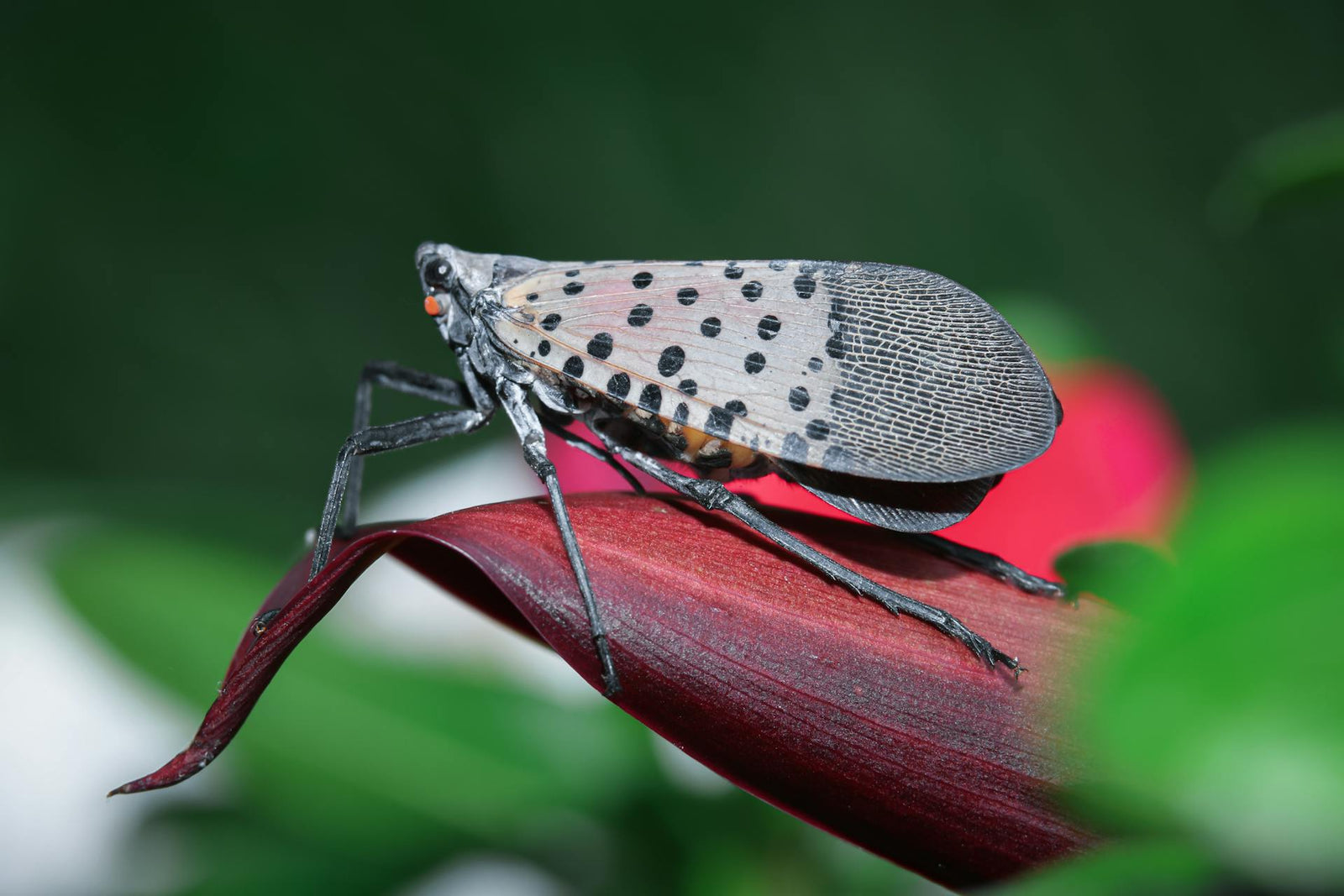Free standard shipping on all orders shipped in the U.S.
Menu

Free standard shipping on all orders shipped in the U.S.
Free standard shipping on all orders shipped in the U.S.


June 24, 2024 3 min read
The spotted lanternfly is an invasive pest that causes significant damage to plants, trees, and crops. It is native to Asia and has quickly spread worldwide, including the United States. Due to their rapid reproduction and ability to spread through multiple ways, such as adult flight and egg masses on transported materials, lanternflies are challenging to control. Addressing infestations is crucial to protect your plants and the native ecosystem.
Here, we’ll share some insights into how to get rid of spotted lanternflies using various treatment methods.
Spotted lanternflies are around an inch long and have gray wings with striking black spots in their forewings and bright red underwings. They go through several life stages: egg, nymph, and adult, each requiring specific control measures. Nymphs are black with white spots, eventually developing red patches. Adults appear from late summer to fall. These pests feed on sap from over 70 plant species, including grapes, apples, and hardwood trees. Their feeding weakens plants, leading to leaf curling, wilting, and eventually death.
Early detection is key when it comes to learning how to get rid of spotted lanternflies. You’ll want to look for signs on plants and trees, such as egg masses, clusters of nymphs or adults, and a sticky residue called honeydew, which leads to sooty mold growth on plants. Egg masses appear as gray or brown mud-like patches on tree trunks, outdoor furniture, packed vehicles, and other surfaces. Nymphs and adults are commonly found on trees, specifically the Tree of Heaven (Ailanthus altissima), grapevines, and other plants. Inspect your property to identify affected areas and the extent of the infestation before taking any steps.
Many homeowners are searching for effective methods how to get rid of spotted lanternflies before they cause further damage. A combination of control methods is required.
One of the most effective ways to reduce spotted lanternfly populations is egg scraping. During winter, when spotted lanternflies are dormant, you can scrape egg masses off surfaces using a knife or plastic card. Collect the eggs in a container filled with hand sanitizer or rubbing alcohol to kill them and prevent hatching. Tree banding is another solution. This involves applying sticky bands around tree trunks to trap nymphs as they climb. Check the bands and replace them regularly to ensure maximum effectiveness.
This is another DIY tip on how to get rid of spotted lanternflies. Chemical control methods involve the use of pesticides and insecticides and are ideal for large infestations. When using these pest control products, always follow local regulations. Systemic insecticides like dinotefuran and imidacloprid are among the most effective DIY solutions. They are absorbed by the tree of plants and kill the spotted lanternflies when they feed on the sap. Contact insecticides such as pyrethroids and neem oil also kill these pests on contact. They’re mostly effective when applied directly on nymphs and adults.
This method involves modifying your local environment to make it less hospitable for spotted lanternflies. The first step is removing plants that attract these pests. The Tree of Heaven is the primary host for these insects. Reducing the number of these trees on your property or even eliminating them can help control infestations. This tip on how to get rid of spotted lanternflies is one of the most effective long-term solutions. Replace the trees with native species. Regular tree and plant care, including pruning, fertilizing, and watering, is also recommended to enhance plant health and reduce susceptibility to infestations.

Preventing future infestations requires vigilance and proactive measures. To ensure early intervention, continue inspecting your green plants and trees for signs of infestation. Community efforts shouldn’t be ignored, as cooperating with others in managing spotted lanternfly infestations reduces the chances of recurring infestations. Report sightings to local pest control authorities to help track and control any potential spread. Stay informed and share with others as you implement control measures.
Still wondering how to get rid of spotted lanternflies? By combining early detection and intervention with the spotted lanternfly treatment methods discussed above, you can reduce their numbers and significantly minimize their spread. If you want to learn more about dealing with pests and the best DIY pest control solutions, get started with our pest guides or explore our products at DIY Pest Warehouse.